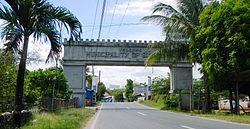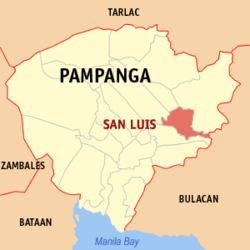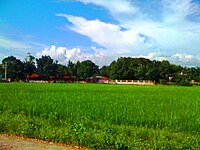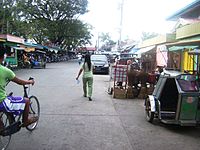
Lubao, officially the Municipality of Lubao, is a 1st class municipality in the province of Pampanga, Philippines. According to the 2020 census, it has a population of 173,502 people.

Candaba, officially the Municipality of Candaba, is a 1st class municipality in the province of Pampanga, Philippines. According to the 2020 census, it has a population of 119,497 people.

Mabalacat, officially Mabalacat City, is a 3rd class component city in the province of Pampanga, Philippines. According to the 2020 census, it has a population of 293,244 people.

San Antonio, officially the Municipality of San Antonio, is a 1st class municipality in the province of Nueva Ecija, Philippines. According to the 2020 census, it has a population of 83,060 people.

Floridablanca, officially the Municipality of Floridablanca is a 1st class municipality in the province of Pampanga, Philippines. According to the 2020 census, it has a population of 135,542 people. Floridablanca is a part of the province of the Pampanga located in Central Luzon lying north of Dinalupihan, Bataan and south-southwest of San Fernando, Pampanga.
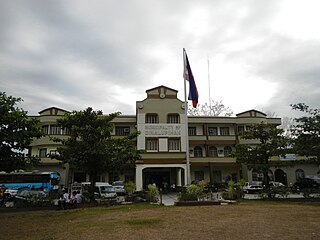
Dinalupihan, officially the Municipality of Dinalupihan, is a 1st class municipality in the province of Bataan, Philippines. According to the 2020 census, it has a population of 118,209 people.

Pilar, officially the Municipality of Pilar, is a 3rd class municipality in the province of Bataan, Philippines. According to the 2020 census, it has a population of 46,239 people.
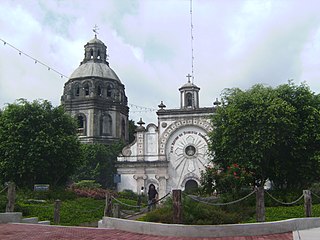
Bacolor, officially the Municipality of Bacolor, is a 3rd class municipality in the province of Pampanga, Philippines. According to the 2020 census, it has a population of 48,066 people.

Guagua, officially the Municipality of Guagua, is a 1st class municipality in the province of Pampanga, Philippines. According to the 2020 census, it has a population of 128,893 people.

Masantol, officially the Municipality of Masantol, is a 2nd class municipality in the province of Pampanga, Philippines. According to the 2020 census, it has a population of 57,990 people.

Minalin, officially the Municipality of Minalin, is a 4th class municipality in the province of Pampanga, Philippines. According to the 2020 census, it has a population of 48,380 people.

Porac, officially the Municipality of Porac, is a 1st class municipality in the province of Pampanga, Philippines. According to the 2020 census, it has a population of 140,751 people.

Santa Ana, officially the Municipality of Santa Ana, is a 3rd class municipality in the province of Pampanga, Philippines. According to the 2020 census, it has a population of 61,537 people.
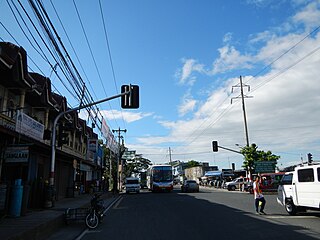
San Simon, officially the Municipality of San Simon, is a 3rd class municipality in the province of Pampanga, Philippines. According to the 2020 census, it has a population of 59,182 people.

Santa Rita, officially the Municipality of Santa Rita, is a 4th class municipality in the province of Pampanga, Philippines. According to the 2020 census, it has a population of 48,209 people. The town of Santa Rita belongs to the Second District of Pampanga, along with the towns in the south-western part of the province. It is 79 kilometres (49 mi) from Manila.

Sasmuan, officially the Municipality of Sasmuan, formally known by its Spanish name Sexmoán, is a 4th class municipality in the province of Pampanga, Philippines. According to the 2020 census, it has a population of 29,076 people, making it the least populated municipality in the province.

Santo Tomas, officially the Municipality of Santo Tomas, is a 4th class municipality in the province of Pampanga, Philippines. According to the 2020 census, it has a population of 42,846 people.

San Miguel, officially the Municipality of San Miguel, is a 1st class municipality in the province of Bulacan, Philippines. According to the 2020 census, it has a population of 172,073 people.

Aliaga, officially the Municipality of Aliaga, is a 2nd class municipality in the province of Nueva Ecija, Philippines. According to the 2020 census, it has a population of 70,363 people.

Bongabon, officially the Municipality of Bongabon, is a 2nd class municipality in the province of Nueva Ecija, Philippines. According to the 2020 census, it has a population of 66,839 people.
